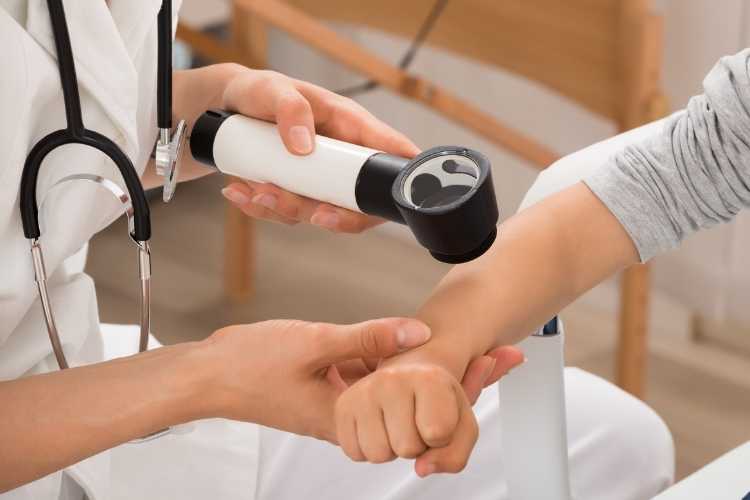If you require surgical dermatology care, you are encouraged only to trust the most skilled and experienced skin cancer and surgical specialists, because they typically provide you with the best treatment. Also, ensure the specialist you decide to seek treatment from is a board-certified dermatologist or Moh surgeon who is known as the best skin cancer surgeon. A Franklin dermatologist is a qualified specialist who can help you with any surgical dermatology, including biopsies, mole removal, skin excisions, cyst removal, and many others.
What is electrodessication and curettage?
During electrodesiccation and curettage, the health care specialist usually makes your skin and the surrounding area numb and then takes away the abnormal tissue. The skin and the surrounding areas are usually numbed to ensure you do not experience any pain during the procedure, ensuring you remain comfortable. After removing the abnormal tissue, the dermatologist then burns or cauterizes the area lightly to stop any bleeding. Electrodesiccation and curettage are used on superficial skin cancers and growths, those located in deeper layers of the skin.
What is cryotherapy?
Cryotherapy involves the use of liquid nitrogen to treat abnormal skin growths. Liquid nitrogen is generally used to freeze abnormal skin growths and eventually cause them to fall off. In most cases, cryotherapy is used to treat and manage skin tags, warts, and some cancerous and precancerous skin growths.
What is Mohs surgery?
Generally, Mohs micrographic surgery refers to an advanced technique that allows them to carry out a microscopically controlled skin cancer removal procedure. The doctor starts by administering local anesthesia and then takes out a small piece of cancer growth. The doctor then views the piece of the growth collected under a microscope to see the cancer cells. Therefore the specialist removes the skin layers incrementally, one after the other checking each layer under the microscope until your skin sample is seen to be free from the cancer cells in it.
In most cases, cancers need one to three laboratory checks. However, even if Mohs usually consumes a lot of time during the procedure, reports have shown that this procedure is successful. Ninety-nine percent of the newly discovered skin cancer and approximately 95% of the returning cancers are being cured by Mohs surgery.
What is skin excision?
When carrying out a standard surgical excision, the specialist administers anesthesia to abnormal skin growths before removal. The dermatologist then uses a scalpel to remove the abnormal skin growths, and since the region is numbed by anesthesia, the procedure is pain-free. The size of the growth and depth of excision determines whether the doctor might make a few tiny stitches on your skin after removing the growth. Skin excision is a procedure performed when one has a mole or cyst that is very big and cannot be treated with simple removal.
How to recover after a surgical dermatology treatment
Many surgical dermatology treatments are mainly minimally invasive and thus require no downtime. However, the service provider advises you on caring for the treatment site, including ensuring the treatment site is clean in order to promote faster healing. In most cases, Tylenol is usually recommended unless you are not able to take it.
In summary, if you require surgical dermatology to remove your skin cancers or growths, visit the Kentucky Skin Cancer Center today.

